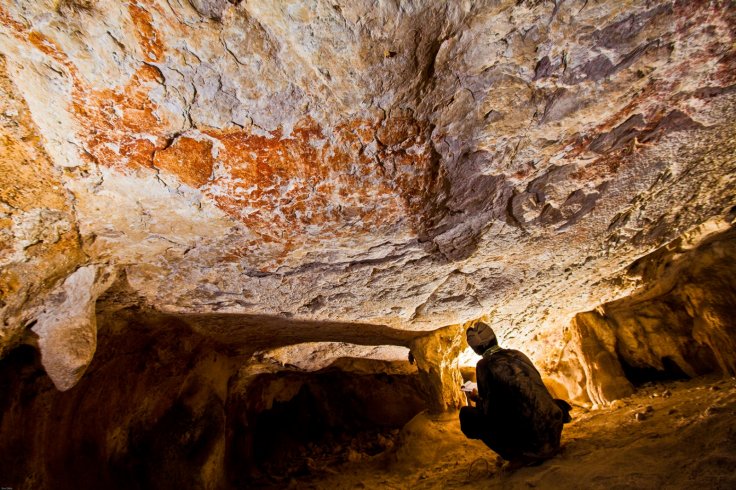
A new study report published in journal Nature has revealed the details of the oldest known animal drawing recently discovered in the walls of an Indonesian cave. The astonishing drawing that of a bull-like beast discovered in the Indonesian part of Borneo is expected to be at least 40,000-years-old, and it makes these drawings slightly older than similar animal paintings spotted in some famous French and Spanish caves.
This new discovery has reshaped the current understandings about ancient animal drawings. Until now, experts have believed that human ancestors initially started drawing animals on caves in Europe. But now, it has been revealed that ancient humans have drawn similar animal figures in Asian caves too.
"The oldest cave art image we dated is a large painting of an unidentified animal, probably a species of wild cattle still found in the jungles of Borneo – this has a minimum age of around 40,000 years and is now the earliest known figurative artwork," said Maxime Aubert, an associate professor at Australia's Griffith University and the lead researcher of the study in a recently issued statement.
Aubert conducted this study in association with researchers at Indonesia's National Research Centre for Archaeology (ARKENAS) and the Bandung Institute of Technology (ITB).
During the research, Aubert and his team used machetes to hack through thick jungle to reach the remote Borneo caves. Apart from the bull painting which is almost five feet wide, the researchers also dated several red and purple-coloured hand stencils and cave paintings of human scenes.
Scientists believe that Borneo is the earth's third largest island and it formed the easternmost tip of the vast continental region of Eurasia. During the ancient times, Europe was at the western extremity of the vast 8,078-mile-wide landmass.
"Our research suggests that rock art spread from Borneo into Sulawesi and other new worlds beyond Eurasia, perhaps arriving with the first people to colonize Australia," added Aubert.









